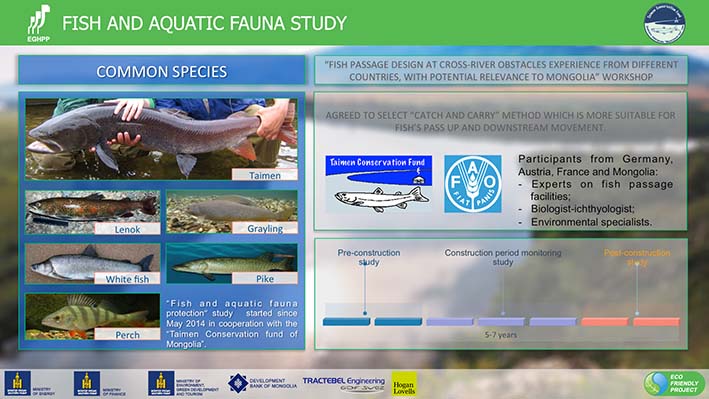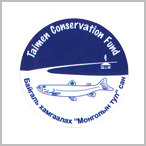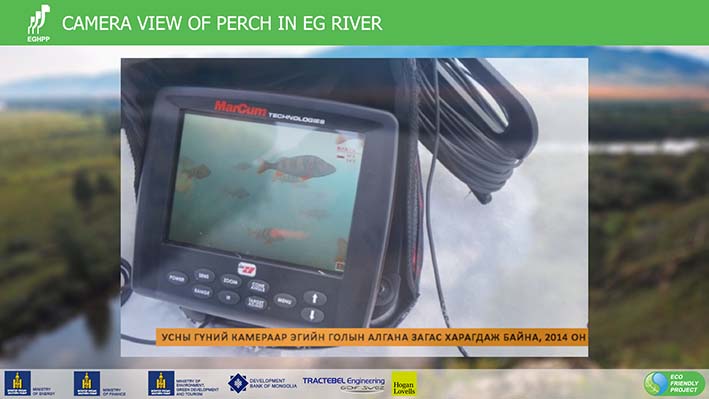- The operation of the EGHPP will contribute to the central energy system of Mongolia hence it will be independent from foreign countries.
- Egiin Goliin Hydro power plant will be the 1st high capacity hydro power plant in Mongolia.
- In 2015, total demand of electricity will exceed over supply.
- Egiin Goliin hydro power plant is one of the highly possible variation which can replace import of electricity.
- Central energy system of Mongolia imports annually $ 25 mln of electricity.
- Egiin Goliin hydro power plant will guarantee the national security of electricity.
- According to the geological study, the EGHPP geological condition of the dam foundation is found to be very agreeable.
- In November 2013, the Government of Mongolia passed resolution to start the construction of Egiin Goliin hydro power plant.
- Over the years total cost of the building power plant is increasing.
- The EGHPP is located at the confluence of Egiin and Selenge river 2.5km upstream.
- Construction of EGHPP will open opportunities of farming the water birds, fish and sable breeding.
- To fill the reservoir with water during summer and to generate electricity during winter.
- In the area of Egiin Goliin hydro power plant, annual precipitation is between 300 and 310 mm.
- In the area of Egiin Goliin hydro power plant, average temperature in December is -40 C, in July and August are +25 C.
- An ice phenomena of EGHPP, will be at its highest in December will reach 1.5m.
- In the area of Egiin Goliin hydro power plant, mean wind speed is 2.3 m/sec, humidity level is 72%.
- Since 1977, Mongolia paid $311 mln which equals to 451 bln of tugrugs on electricity imported from Russian Federation.
- Start up minutes of hydro power plant is 2-5 minutes in contrast to Thermal power plant 2-4 hours.
- Central energy system’s daily load during the winter is 776-800 MW.
- The EGHPP generated energy will be connected to the CES via 2 circuits double conductors with capacity of 220 kV.
- The main criteria for meeting the environmental objective are avoided of carbon dioxide (CO2) emissions, and the specific carbon offset of the project is determined in terms of carbon dioxide (CO2) emissions avoided per GWh over the lifetime of the project and thus EGHPP reduces 709 thousand ton of CO2 annually.
- By 2022,EGHPP is to produce 581 million kWh annually at minimum and the annual electricity generation is to vary between 581 to 2662 million kWh.
- By the April 2014 investigative study discovered 218 artifacts at the hydropower plant DAM SITE (910м), and 24 artifacts at the infrastructure route.
- 242 artifacts are planned to be excavated and preserved in 2014-2015.
- 423 species of plants grow at the Egiin Goliin DAM SITE.
- Hydropower costs less than most energy sources.
- Renewable Energy creates three-times more jobs than fossil fuels.
- In 1878 the world's first hydroelectric power scheme was developed at Cragside in Northumberland, England by William George Armstrong.
- Hydropower today provides about 20 % of the world's electricity and is the main energy source for more than 30 countries.
- Hydropower facilities can quickly go from zero power to maximum output, making them ideal for meeting sudden changes in demand for electricity.
- Hydropower can also be used for water supply, flood control, irrigation and even recreation purposes.
- The financial status of the hydroelectric industry is generally healthy due to long equipment life and low maintenance and operating costs.
- Egiin Goliin hydropower plant is estimated to cover the investment in 20-25 years of time with its sales income.
- Thermal power plants in UB city burns 3.5 million tons of raw coal, pollutes the air with 4 tons of coal, 4.5 million cubic meters of gas and 6kg emissions of sulfur gas.
- The Eg river is Mongolia's third largest river, and at the proposed dam site has a catchment area of about 40,000 km².
- Due to Mongolian country characteristics and situation, the value of 315 MW installed capacity has been selected.
- There are 21 types of fish at the Eg river.
- The new bridge that will be built across River Selenge will be a steel concrete bridge.
- Turbines and generators are expected to be replaced after 32 years of operation.
- Peak demand of the Mongolian energy system reached 948 MW, exceeding both installed and feasible generation capacity and the reason for increased imports of electricity
- Electricity is imported from Russia to the Central Region Integrated System via Selendum sub-station Russia and Darkhan sub-station Mongolia.
-
CONSTRACTOR -
 TAIMEN CONSERVATION FUND
TAIMEN CONSERVATION FUNDThe Taimen Conservation Fund (TCF) is a Mongolian based non-governmental organization which is dedicated to protecting Mongolian watersheds and its healthy population of taimen. Taimen, the world's largest salmonid, is an indicator of a healthy aquatic ecosystem. Eg, Uur, more than 10 years, the Selenga River fish is an internationally recognized research institution. Hydro-electric power plant in the region in relation to water fauna studies and recommended conditions that may arise from the precautionary and cooperation.
-
Date: 2014.04.29 - 2014.12.31 -
FISH AND AQUATIC LIFE HABITAT STUDIES -
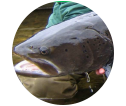
Eg river is the outflow of Khuvsgul Lake, which is the freshwater lake of Mongolia and flows down 510 km attributing to the Selenge River the biggest river of Mongolia where many species of fishes and aquatic faunas are habituated. In accordance with the report of Mongolian and Russian expedition in 1983 there are 12 families 24 species of fish in the Selenge river watershed and 11 families 17 species in Eg River. Since the PIU established in 2014 initiated research activities to protect fish and aquatic habitats.
The research is planned to conduct during 5-7 years in following three stages of the project:
• Preconstruction period;
• Construction period;
• Operation period
The research was conducted by the team of “Environment protection taimen conservation fund of Mongolia” NGO that has experience at Eg-Uur river leaded by Dr. B.Mendsaikhan Researcher of Institute of Geo-Ecology of MAS and Dr. Olaf Jensen professor of Rutgers University of USA and following team members:
• Dr. Noreen Mcaulife,
• Mr. Christopher Free,
• Drs. Sudeep Chandra, Nevada University,
• Dr. Brant Allen,
• Dr. Mark Pyron,
• Dr. Jeff Thompson,
• Dr. Johannes Irgeher,
• Dr. James Thorp, Kanzas University,
• Dr. Zeb Hogan, Research and Director of “Monster fish” Project of National Geographic chanel,
• Dr. Andreas Zitek, University of Natural Resources and Life Sciences, Vienna Austria
• Dr. Thomas Prohaska.
The detailed research includes fish movement, food habitat, genetic relation and other studies have been conducted within 100 km of Eg and Selenge rivers catching areas. Also the workshop “Fish passage design at cross-river obstacles experience from different countries with potential irrelevance to Mongolia” was organized in collaboration with the United Nation’s (FAO) Food Agriculture Organizations in Bulgan province.
-
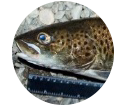
The participants of the workshop were experts on fish passage facilities, biologist-ichthyologist and environmental specialists from Mongolia, Germany, Austria, France and considered all possible fish passages exist in today’s practice and make complex decision with fish movement from dam down flow to upstream agreed and recommended to select the “catch and carry” method and conduct detailed investigation. In following the recommendation the design of fish pass included in the Feasibility study of Egiin Goliin HPP and detailed study is in progress. Implementation of fish and aquatic life habitat study in preconstruction period will provide possibility to construct Egiin Goliin HPP with fish pass in accordance with the international standard and fish life condition of Eg and Selenge river.
-
PRELIMINARY CONCLUSIONS OF STUDIES COMPLETED IN 2014 -

The Eg River has more ‘river’ habitats in comparison with Selenge River. That means fishes that thrive in river with rapid stream, berm, rapid like ruff, taiman, trout take 55.3% of all type fishes involved in this research.
ОIn recent time radio investigation is in progress for fish movement through radio indicators with type SR (Lotek brand) installed in 13 taimans, 1 pike, 1 whitefish and 1 trout and transmission indicators with type “pit tag” installed in 7 trouts and 13 Mongolian graylings.
According the fish population involved in the research the area for HPP suitable for movement and habitat of young fish. So it is required to conduct more detailed biological investigation for generation and define place and movement for generation.
There are 5 taimans, 100 trouts and 44 ruffs killed by fishing spear at the upstream part of Eg river during generation period in 2014 and has been taken measures in accordance with law. In this period 45 violations were detected and imposed penalty of 929600 MNT and replacement of 3’074’000 MNT for 25 persons. Also 252 kg fish killed illegally and 8 fishing rods were confiscated and transferred to state income and 2 fish-baskets were demolished. Therefore it is required to pay attention during research work to protect fish and aquatic life habitats.
DAM SITE
-
THE DAM SITE IS LOCATED
2.5 KM FROM THE CONFLUENCE OF THE EG-SELENGE river in KHUTAG-UNDUR SOUM, BULGAN PROVINCE.
RESERVOIR
-
NORMAL WATER LEVEL
910 M A.S.L -
VOLUME AT NORMAL WATER LEVEL
5.7 BILLION m3 -
SURFACE AREA
154.3 KM2
DAM
-
DAM CREST LEVEL
912 M A.S.L -
DAM CREST WIDTH
8 м -
DAM CREST LENGTH
740 M -
DAM HEIGHT ABOVE NATURAL GROUND
82 м -
DAM VOLUME
2.29 MILLION m3
POWER HOUSE
-
INSTALLED CAPACITY
315 МW -
ANNUAL ELECTRICITY PRODUCTION
606 MILLION KWh -
TURBINE
FRANCIS 4 X 68.78 MW, 2 X 20.5 MW, 1 X 3 MW
PROJECT INFRASTRUCTURE
-
FROM THE DAM SITE TO THE ERDENET SUBSTATION
72.3 KM DOUBLE CIRCUIT 220KV TRANSMISSION LINE -
FROM THE DAM SITE TO THE ERDENET CITY
71.9 KM ACCESS ROAD, 320 M LONG REINFORCED CONCRETE BRIDGE OVER THE SELENGE RIVER

